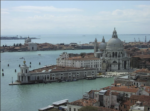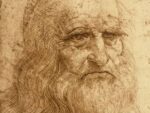14|14 Modernity’s First Century
.jpg)
Asta 14|14, Modernity’s First Century.
Comunicato stampa
Wednesday 10th December 2014 - Sunday 14th December 2014. PLASMA via Gargano 15, via privata Giuseppe Scalarini. For info please contact [email protected]. INSTAGRAM: @14LL14
Matters of great concern should be treated lightly. Matters of small concern should be treated seriously.
Yamamoto Tsunetomo. Hagakure. 1716
"
THE PROJECT.
History never repeats itself but it sure does rhyme, some say. It is undeniable that todayʼs world bears a number of striking similarities with the world in 1914.
The Project involves 22 artists. Invited to participate with a text which was composed as a collage of various writings by significantly important artists who played a symbolic part in the formulation of our current culture during the last century. The participant artists engage with the text and with the indisputable parallelisms found between the years in examination. Trying to identify different analogies on the similar but yet very different historical periods.
" It is hard to place a single description considering the immensity of facts, even though we canʼt avoid to admit the affinities of the social, scientific and cultural ferment of each respective year as well as the political unrest that characterizes both 1914 and 2014. The artists confront themselves with the indisputable growing questions on the effects of our cultural dependency on a technology which we fail to understand in its totality as well as the emanation of new forms of communities; experimenting between memory and exploration. Of course part of the experiment is the understanding of modernityʼs contemporary notion. It is clear that the definition of modernity depends on the observer. (term borrowed by the quantum physics discipline)
" It is also of great importance the increase of phenomenons like the hunger for transcendence, the desire for the union with the forces of nature,the rediscovery of the mysteries, that lie hidden in the world, and the search for the existence of the divine energies the cosmos possesses, which become evident today among so many people, are phenomenons that can be easily traced equally increasing around the 1914ʼs world.
" It must not go unnoticed the fact that back in 1900ʼs the world had reasons to be optimistic about a better future for humanity through technological process. Do we have enough reasons to be as optimistic as our predecessors?
"
!
THE EXHIBITION.
Every artist was required to produce from one to three pieces in order to express what he or she felt needed to be expressed through his or her work. Every piece produced is carefully positioned in the curious space of the exhibition secretly hoping to create interesting dialogues between artists, pieces and ideas such as time and eros.The exhibition is taking place at PLASMA, a small hangar next to the most famous club in Milan Plastic.
! THE AUCTION.
Art has been ruthlessly commodified in its display and in its consumption. The proliferation of fairs has submitted art to the exhibition conditions of trade shows; it circulates with increasing activity on the secondary market and now denominates an increasing number of investment funds.
Peter Eleey. What about responsibility?
" The auction is taking place at the space of the exhibition. Every lot includes the entire production of the artist for this project leaving us with 22 lots to bid the night of the 14th December. Every transaction will be made between the collector and the artist in this way the auction is an active part of the project since it is a clear choice of position towards the established contemporary art market and most importantly what it represents.
THE ARTISTS
ALESSANDRO DI PIETRO | BIANCA SALVO | DANIELE DE CAROLIS DANIELE INNAMORATO | EDOARDO ROMAGNOLI | FEDERICA PERAZZOLI FILIPPO BISAGNI | FRANCESCA BELGIOJOSO | FRANCESCO BERTOCCO GIANANDREA POLETTA | GIANCARLO BENJAMIN | JACOPO RINALDI LOREDANA DI LILLO | MARGHERITA CHIARVA | MAURO VIGNANDO
NEON PEACE | NICOLA GUIDUCCI | PIETRO SPOTO | RAFAEL HERMAN SAMUELE MENIN | SEBASTIANO MAURI | SOFIA CACCAPAGLIA
THE INVITATION.
1.the art.
2.the artist.
0.Can one make works which are not works of art? Marcel Duchamp. 1913
1.You canʼt make either life or art, you have to work in the hole in between, which is undefined. Thats what makes the adventure of painting. Robert Rauschenberg. 1959
1.1.Art comes from life. Art comes from the problem you have in seducing birds, men, snakes-anything you want. It is a Corneille tragedy where everybody is pursuing somebody else. I believe that if you work enough the world is going to get better. If i work like a dog on all these contraptions i am going to get the bird i want. Louise Bourgeois. 1988
1.2.The aesthetics is the sine qua non for art: if a work is not aesthetic, it is not art by definition.
Robert Motherwell. 1946
1.3.Today it is not a question of whether art should be abstract, concrete, or poetic: it can be all of these things. However, what it should do, and must do, is express profoundly and sincerely the message of a humanity that is its own, the ambiguous and transcendental reality that is ours. Michel Tapieʼ. 1956
1.4.The work of art has its origin in an unconscious impulse that springs from a collective substrata of universal values common to all men, from which all men draw their gestures, and from which the artist derives the archai of organic existence. Every man of his own accord extracts the human element from this base, without realizing it, and in an elementary and immediate way. Where the artist is concerned it is a question of the conscious immersion in himself through which, once he got beyond the individual and contingent level, he can probe deep down to reach the living germ of total humanity. Everything that is humanly communicable is derived from this, and it is through this discovery of the psychic substrata that all men have in common that the relationship of author-work-spectator is made possible. In this way the work of art has the totemic value of living myth, without symbolic or descriptive dispersion: It is a primary and direct expression. The foundations of the universal value of art are given to us now by psychology. This is the common base that enables art to sink its roots to the origins before man and to discover the primary myths of humanity. Piero Manzoni. 1957
1.5.We nearly always live through screens -a screened existence. And i sometimes think, when people say my work looks violent, that perhaps i have from time to time been able to clear away one or two of the veils or screens. Francis Bacon. 1971
1.6.Modern art, suffering from a permanent tendency to the constructive, an obsession with objectivity, stands isolated and powerless in a society which seems bent on its own destruction. As the extension of a style created for social elite, with the disappearance of that elite modern art has lost its social justification and is confronted only by the criticism formulated by a clique of connoisseurs and amateurs.Constant Nieuwenhuys. 1948
1.7.Western art, once the celebrator of emperors and popes, turned to serve the newly powerful bourgeoisie, becoming an instrument of the glorification of bourgeois ideals. Now that these ideals have become a fiction with the disappearance of their economic base a new era is upon us, in which the whole matrix of cultural conventions loses its significance and a new freedom can be won from the most primary source of life. Constant Nieuwenhuys. 1948
1.8.A living art makes no distinction between beautiful and ugly because it sets no aesthetic norms. If we observe forms of expression that include every stage of human life, for example that of a child (who has yet to be socially integrated), then we no longer find this distinction. The child know of no law other than its spontaneous sensation of life and feels no need to express anything else. The same is true of primitive cultures, which is why they are so attractive to todayʼs human beings, forced to live in a morbid atmosphere of unreality, lies and infertility. Constant Nieuwenhuys. 1948
1.9.Our art is the art of a revolutionary period, simultaneously the reaction of a world going under and the herald of a new era. For this reason it does not conform to the the ideals of the first, while those of the second have yet to be formulated. But it is the expression of a life force that is all stronger for being resisted, and of considerable psychological significance in the struggle to establish a new society.
Constant Nieuwenhuys. 1948
2.All artists whether primitive or sophisticated have been involved in the handling of chaos.
Barnett Newman. 1943
2.1.A common vice among artists-or rather bad artists- is a certain kind of mental cowardice because of which they refuse to take up any position whatsoever, invoking a misunderstood notion of the freedom of art, or other equally crass commonplaces. Since they have an extremely vague idea of art the result is generally that they finish up by confusing art with vagueness itself. Piero Manzoni. 1957
2.2.The artist must immerse himself in his own anxiety, dredging up everything that is alien, imposed or personal in the derogatory sense, in order to arrive at the authentic zone of values. Piero Manzoni. 1957
2.3.The more we immerse ourselves in ourselves, the more open we become, since the closer we get to the germ of our totality the closer we are to the totality of all men. Piero Manzoni. 1957
2.4.In this period of change, the role of the creative artist can only be that of the revolutionary: it is his duty to destroy the last remnants of an empty, irksome aesthetic, arousing the creative instincts still slumbering unconscious in the human mind. The masses, brought up with aesthetic conventions imposed from without, are as yet unaware of their creative potential. This will be stimulated by an art which does not define but suggests, by the arousal of associations and the speculation which come forth from them, creating a new and fantastic way of seeing. The onlookerʼs creative ability (inherent to human nature) will bring this new way of seeing within everyoneʼs reach once aesthetic conventions ceases to hinder the working unconscious. Constant Nieuwenhuys. 1948
2.5.Once the task of the artist was to make good art;now it is to avoid making art of any kind once the public and critics had to be shown now the latter are full of authority and the artists are full of doubt.
Allan Kaprow. 1966
2.6.What we call genius is nothing else but the power of the individual to free himself from the ruling aesthetic and place himself above it. As this aesthetic loses its stranglehold, and with the disappearance of the exceptional personal performance, genius will become public property and the word ʻartʼ will acquire a completely new meaning. That is not to say that the expression of all people will take on a similar, generalized value, but that everyone will be able to express himself because the genius of the people, a fountain in which everybody can bathe, replaces the individual performance. Constant Nieuwenhuys. 1948
Georgios Vogiatzakis. 2014.
Wednesday 10th December 2014 - Sunday 14th December 2014. PLASMA via Gargano 15, via privata Giuseppe Scalarini.
For info please contact
[email protected].
INSTAGRAM: @14LL14



